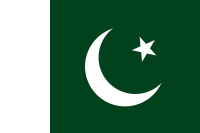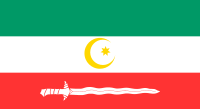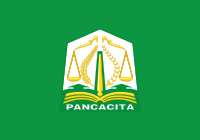Green in Islam


The color green (Arabic: أخضر, romanized: 'akhḍar) has a number of traditional associations in Islam. It holds profound traditional associations within Islam, embodying themes of paradise, purity, and prosperity. In the Quran, green is linked with paradisiacal imagery, symbolizing the serenity of paradise. Green was adopted by the Shi'ites, and remains particularly popular in Shi'ite iconography, but it is also widely used in by Sunni states, notably in the flag of Saudi Arabia and the flag of Pakistan. Green's subsequent incorporation into national flags highlights the enduring significance in Islamic iconography[1].
Quran

Verses from the Qur'an describing reclining on green cushions and garments of fine silk imbue the color with a sense of tranquility and peace. Believers are adorned with green garments of fine silk and heavy brocade, symbolizing purity and divine favor.[2][3]
Reclining on green Cushions and rich Carpets of beauty
— Sura 55, verse 76.[4]
Upon them will be green garments of fine silk and heavy brocade, and they will be adorned with bracelets of silver; and their Lord will give to them to drink of a Water Pure and Holy.
— Sura 76, verse 21.[5][6]
Al-Khidr ("The Green One") is a Qur’anic figure who met and traveled with Moses.[7]
The Green Dome, traditional site of the tomb of Muhammad, was painted green on the order of Sultan Abdul Hamid II (r. 1876–1909).[citation needed]
Islamic flags
Green flags were adopted by Shi'ites in the early Islamic period,[8] although the most common Shi'a color was white, in symbolic opposition to Abbasid black.[9][10] Thus in 817, when the Abbasid caliph al-Ma'mun adopted the Alid Ali al-Ridha a his heir-apparent, he also changed the dynastic color from black to green. The change was reverted al-Ma'mun had Ali killed, and returned to Baghdad in 819.[11][dubious ]
Across the Islamic world, green finds expression in national flags, serving as a powerful symbol of faith and unity. From the flags of Saudi Arabia[12] and Pakistan to those of Algeria and Azerbaijan, green stands as a unifying mark, reflecting the shared heritage of Muslim nations.
Several more national flags as a symbol of Islam which include: Algeria, Azerbaijan, Comoros, Mauritania, Pakistan, Bangladesh, Saudi Arabia, Sri Lanka, and Tajikistan.[13][14] Some Arab countries also use pan-Arab colors, which include green. These include: Iraq, Jordan, Kuwait, Lebanon, Sudan, Syria, and the United Arab Emirates, as well as several contested states including Palestine, Somaliland, and Western Sahara. Libya formerly also followed this principle, featuring green as its only component color (at the time the only flag in the world to use only one color) until 2011.
There are also several flags of Muslim-majority countries featuring green color that does not symbolize Islam. Examples include Bangladesh, Turkmenistan, Uzbekistan, Guinea, Guinea-Bissau, Mali, and Senegal (in the latter four cases, the green color is a component of the pan-African colors, which are also adopted by even Christian-majority countries such as Malawi and South Sudan).
Green is a common color used by Islamist political parties.[15]
Gallery
-
Flag of Bangsamoro, Philippines
-
Flag of Aceh, Indonesia
See also
References
- ^ Kamali, Mohammad Hashim; Kamali, Muhammad Hashim (1993). "Characteristics of the Islamic State". Islamic Studies. 32 (1): 17–40. ISSN 0578-8072.
- ^ Burge, S.R. (2015-03-04). "The Search for Meaning: Tafsīr, Hermeneutics, and Theories of Reading". Arabica. 62 (1): 53–73. doi:10.1163/15700585-12341336. ISSN 0570-5398.
- ^ Sharifah M. AlOboudi (2015-07-01). "Najd, the Heart of Arabia". Arab Studies Quarterly. 37 (3). doi:10.13169/arabstudquar.37.3.0282. ISSN 0271-3519.
- ^ ibn Hāshim 2009, Sura 55.
- ^ ibn Hāshim 2009, Sura 76, The Human (Al-Insaan).
- ^ ibn Hāshim 2009, Sura 18, The Cave (Al-Kahf).
- ^ Catherine, David. "Al-Khidr, The Green Man". Retrieved 2007-11-30.
- ^ David-Weill, J. (1960). "ʿAlam". In Gibb, H. A. R.; Kramers, J. H.; Lévi-Provençal, E.; Schacht, J.; Lewis, B. & Pellat, Ch. (eds.). The Encyclopaedia of Islam, Second Edition. Volume I: A–B. Leiden: E. J. Brill. p. 349. OCLC 495469456.
- ^ Bosworth, C. E., ed. (1989). The History of al-Ṭabarī, Volume XXX: The ʿAbbāsid Caliphate in Equilibrium: The Caliphates of Mūsā al-Hādī and Hārūn al-Rashīd, A.D. 785–809/A.H. 169–192. SUNY Series in Near Eastern Studies. Albany, New York: State University of New York Press. pp. 18–19, note 74. ISBN 978-0-88706-564-4.
- ^ Hathaway, Jane (2003). A Tale of Two Factions: Myth, Memory, and Identity in Ottoman Egypt and Yemen. Albany, New York: State University of New York Press. p. 97. ISBN 978-0-7914-5883-9.
The Ismaili Shi'ite counter-caliphate founded by the Fatimids took white as its dynastic color, creating a visual contrast to the Abbasid enemy.
- ^ Kennedy, Hugh (2004). The Prophet and the Age of the Caliphates: The Islamic Near East from the 6th to the 11th Century (Second ed.). Harlow: Longman. pp. 152–153, 161. ISBN 978-0-582-40525-7.
- ^ Salamé, Ghassan (1987). "Islam and Politics in Saudi Arabia". Arab Studies Quarterly. 9 (3): 306–326. ISSN 0271-3519.
- ^ "Field Listing :: Flag Description". The World Factbook. Central Intelligence Agency. Archived from the original on January 9, 2019. Retrieved 12 March 2019.
- ^ "Information about national flag of Tajikistan". www.advantour.com. Retrieved 2017-10-25.
- ^ Adams, Sean; Morioka, Noreen; Stone, Terry Lee (2006). Color Design Workbook: A Real World Guide to Using Color in Graphic Design. Gloucester, Mass.: Rockport Publishers. pp. 86. ISBN 159253192X. OCLC 60393965.
Bibliography
- ibn Hāshim, Abū al-Qāsim Muḥammad ibn ʿAbd Allāh ibn ʿAbd al-Muṭṭalib (2009), Quran The Final Testament, Khalifa, Rashad transl, Tucson: Majid, retrieved 2007-11-30
- Abdul-Matin, Ibrahim. “Green Deen: What Islam Teaches about Protecting the Planet.” Green Deen: What Islam Teaches about Protecting the Planet, Kube Publishing, 2012.



